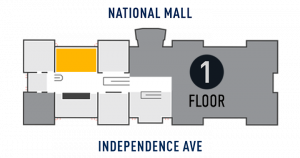Introduced in 1930, the Northrop Alpha represents a transitional air transport design, a blend of old and new aircraft technology. The Alpha could enclose six passengers in a snug, comfortable cabin, but the pilot remained exposed to the elements. The aircraft was all metal and streamlined, but had fixed landing gear and only one engine.
Designed by John K. "Jack" Northrop, the Alpha was a great step forward in metal aircraft. Many of its features, particularly the multicellular wing design, were later used in the Douglas DC-2 and DC-3. Although more powerful twin-engine aircraft rendered the Alpha obsolete for passenger service, it continued to serve as a fast express cargo plane.
This aircraft was restored by volunteers from Trans World Airlines.
Display Status
This object is on display in America by Air at the National Air and Space Museum in Washington, DC.

Object Details
Date
1930
Country of Origin
United States of America
Type
CRAFT-Aircraft
Manufacturer
Northrop Aircraft Inc.
Physical Description
Air transport; mail plane; single engine; mono plane.
Dimensions
3-D: 866.1 × 335.3 × 274.3cm, 1211.6kg, 12.751m (28 ft. 5 in. × 11 ft. × 9 ft., 2671lb., 41 ft. 10 in.)
Width reflected is of main fuselage with the wings removed.
Dimensions taken by Move Contractor on behalf of CSC at the time of deinstall. Record Updated 12/15/2020. See As-Built in Media section for additional information.
Materials
Overall: Aluminum
Inventory Number
A19761144000
Credit Line
Gift of Trans World Airlines, Inc.
Data Source
National Air and Space Museum
Restrictions & Rights
Open Access (CCO)
For more information, visit the Smithsonians Terms of Use.

